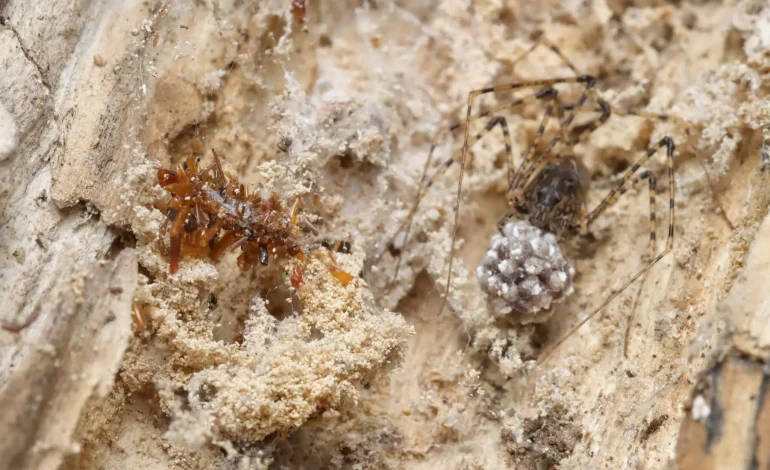On the Hawaiian island of Oahu, scientists have discovered a highly unusual predator: a carnivorous caterpillar that not only feeds on other insects but incorporates their remains into its own protective casing.
Dubbed the “bone collector,” this caterpillar was described in new research published in Science on April 24.
The species, found only in a six-square-mile area of Oahu’s mountainous forests, belongs to the Hyposmocoma genus — a group of moths endemic to Hawaii. What sets this particular caterpillar apart is its unique behavior: it decorates its mobile silk case with the body parts of the insects it consumes or finds trapped in spider webs.
“This behavior was utterly unknown,” said Daniel Rubinoff, an entomologist at the University of Hawaii at Manoa and co-author of the study.
The caterpillar appears to use the remains — including beetle abdomens, weevil heads, and even bits of molted spider exoskeletons — as a form of camouflage while it moves through the webs of nonnative spiders.
The researchers first encountered the bone collector in 2008 and, over the course of more than 150 field surveys, have found just 62 specimens. Despite its rarity, the caterpillar has shown remarkable selectivity in how it constructs its case. Laboratory observations revealed that the larvae prefer specific insect parts, using their mandibles to test and trim potential pieces before adding them to their silk casings.
This behavior likely serves a defensive purpose. While the caterpillar shares space with multiple species of introduced spiders, researchers have not observed any instances of the caterpillar being attacked or ensnared. Scientists speculate that the body-part-studded case helps the caterpillar blend in with detritus caught in the web, appearing less like prey and more like leftover refuse.
Though other meat-eating caterpillars exist, the “bone collector” is especially rare due to its scavenging habits and its interaction with spider habitats — an unusual and risky evolutionary path, according to David Wagner, an entomologist at the University of Connecticut not involved with the study.
Genetic analysis suggests that the bone collector diverged from other Hyposmocoma species over five million years ago, possibly on older Hawaiian islands before migrating to Oahu. Today, the species faces new threats from invasive predators such as ants and parasitic wasps. The researchers emphasize that conservation efforts are urgently needed to protect Hawaii’s native arthropods.
“This discovery reminds us just how much biodiversity is still hidden, even in well-studied ecosystems,” Rubinoff noted. “And how fragile it can be.”
The New York Times and the Associated Press contributed to this report.










The latest news in your social feeds
Subscribe to our social media platforms to stay tuned